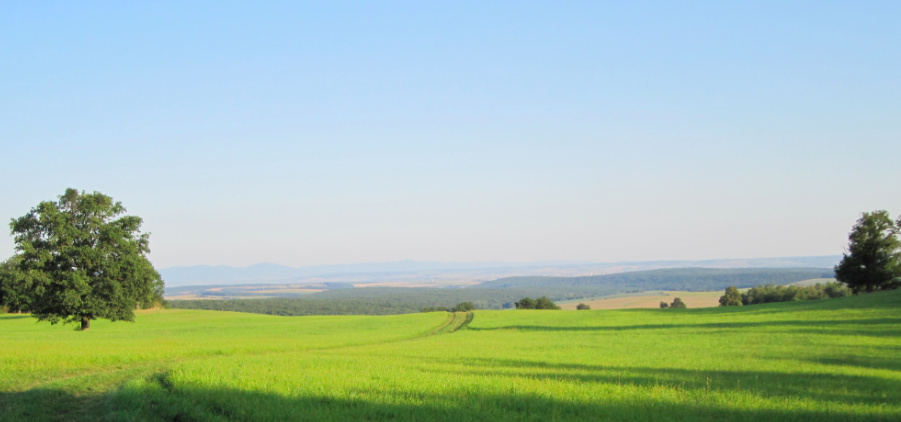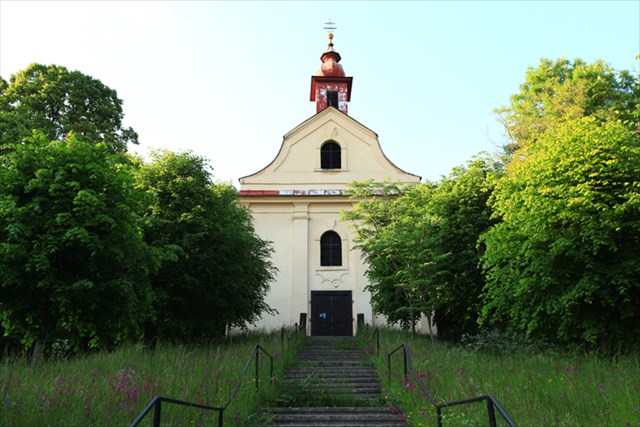svätá anna Traditional Geocache
-
Difficulty:
-

-
Terrain:
-

Size:  (small)
(small)
Please note Use of geocaching.com services is subject to the terms and conditions
in our disclaimer.
per angusta ad augusta
cez tieseň k nádhere
svätá anna


príď na pár chvíľ - na toto silné miesto, ktorého prameň je viac ako voda - už od stredoveku.
vodičku stráži dub, ktorý si pamätá mnoho storočí.
spýtaj sa ho, čo má skutočnú cenu v živote človeka
"kult sv. Anny v baníckych oblastiach Európy bol rozšírený už v stredoveku.
Potvrdenie, ktoré ostrihomský prímas vydal v roku 1711 pre výsady tohto pútnického miesta, pravdepodobne nadviazalo na tradíciu dlhodobej ludovej úcty voci jestvujúcemu liecivému pramenu a sv. Anne. Pútnické miesto patrilo do správy premonštrátskeho opátstva v Jasove.
Pri velkolepej stavbe nového – barokového – kláštorného komplexu v Jasove (na mieste staršej budovy, ktorú uskutocnili v rokoch 1750-1770 pod vedením opáta Andreja Sauberera), pravdepodobne v roku 1750 vybudovali aj na tomto mieste barokovú kaplnku, zasvätenú sv. Anne.
V roku 1751 vydal pápež Benedikt XIV. potvrdzujúcu bulu pre tunajšie púte. V kaplnke zriadili štyri oltáre: sv. Anny, Bolestnej Márie, sv. Norberta (zakladatel rádu premonštrátov) a sv. Jána Nepomuckého (patrón rožnavskej diecézy).
Kaplnke postavili vlastnú vežicku s dvojicou zvonov, na chór nad vstupom umiestnili organ. Veriaci sa tu schádzali pätkrát v roku: 26. júla na sviatok patrónky: sv. Anny, 1. mája na zaciatok mariánskeho mesiaca, v nedelu v oktáve sviatku Panny Márie tzv. Klasovej, 15. augusta na sviatok Nanebovzatia Panny Márie a na sviatok Povýšenia sv. Kríža. (Máme údaj aj o tom, že v rokoch 1776-78 sa o kaplnku a pramen staral miestny pustovník (eremita), za co dostával rocný príspevok 2 rýnske.)
Jasovskí premonštráti sa dlhodobo starali o údržbu kaplnky, o príspevkoch pútnikov a použití nazhromaždených penazí viedli presnú evidenciu.
Koncom 18. storocia najviac veriacich prichádzalo na pút na sviatok sv. Anny – podla archívnych údajov z r. 1792 tu spovedalo 15 knazov, z Jasova, Rudníka, Medzeva a Poproca prichádzali celé procesie. Po prvej rannej omši nasledovala omša slovenská, neskôr madarská i nemecká. K slávnostnej hlavnej omši prispel aj košický chrám sv. Alžbety zapožicaním ornátov a pre gréckokatolíckych veriacich sa slúžila omša pred oltárom sv. Norberta.
V roku 1793 bulou pápeža Pia VI. pútnici na sviatok sv. Anny získali tzv. plnomocné odpustky, ktoré mohli zabezpecit aj pre doma zomierajúcich príbuzných. Omše sa slúžili nadalej v troch reciach a spovedajúcich knazov bolo v niektorom roku aj dvadsat.
Po zrušení premonštrátskeho rádu reformami Jozefa II. sa od roku 1787 dostala kaplnka do správy farnosti v Rudníku, kam dodnes patrí. V r. 1823 postavili za kaplnkou sochu sv. Jána Nepomuckého.
Pramen, ktorého vodou si pútnici omývali choré oci, pravidelne cistili. Zaciatkom 19. storocia doplnili pútnické miesto aj o Kalváriu - zastavenia krížovej cesty, z ktorej sa dnes už nic nezachovalo.
Spracovala doc.Kvetoslava Markušová - podla: Sz. Anna élete és a rudnoki sz. Anna kápolna története. Néhány alkalmi imádság.
(Život sv. Anny a dejiny kaplnky sv. Anny pri Rudníku. Niekolko príležitostných modlitieb.) Jasov 1914
Anna in this place, but in medieval Europe the cult of St. Anna was quite usual in the mining areas.
The confirmation, given by the archbishop from Esztergom in 1711 on the rights of this pilgrimage site, seems to continueing a traditional folk awe to the existing spring of curative water and to St. Anna.
The pilgrimage site then was kept by the Premonstratensian Abbey in Jasov. During the building of the magnificent new – Baroque – abbey ensemble in Jasov (realised in 1750-1770 under the abbot Andreas Sauberer in the place of the previous building), probably in 1750 was a Baroque chapel erected in this place too, concecrated to St. Anna.
In 1751 pope Benedictus XIV confirmed to it a bull about pilgrimages. In the chapel four altars were arranged: to St. Anna, to Mary – Mother of Sorrows, St. Norbert (foundator of the Premonstratensian Order) and to St. John Nepomucenus (patron of the diocese in Rožnava).
The chapel has an own turret with two bells. The worshippers had been gathering here five times every year: on July, 26th – the feast of the patroness: St. Anna, on May, 1st – beginning of the „Marian-month“, on sunday in the octave of the feast of Mary ..................., on August, 15th -
Assumption of Mary the Virgin and on the feast of Exaltation of the Holy Cross. (We have a data about a local hermit taking care about the chapel and the spring, who was given an annual contribution of two rhine florins.) The Praemonstratensians from Jasov were keeping the maintenance of the chapel and detailed booking the collected income from the pilgrims and its usage for a long time. At the end of the 18th century most of the pilgrims came to the St. Anna feast – according the archive data from 1792 there were 15 priests for the confessions and complete processions were coming from Jasov, Rudník, Medzev and Poproc.
The first morning mass was followed by a Slovak mass, later a Hungarian and a German one. The ornates for the priests for the main festive mass were contributed from the St. Elisabeth church in Košice, and there was a mass served at the altar of St. Norbert for the Greek-catholic believers to. According to the bull of pope Pius VI, signed in 1793, the pilgrims on St. Anna feast could be granted full indulgences – for the relatives as well, who stayed dying at home.
Masses were served in three languages, some years the confessions were managed by 20 priests. As the emperor Joseph II suppressed the Premonstratensians, the chapel was given under the custody of the parish in Rudník and so it remained untill now. In 1823 a statue of St. John Nepomucenus was arranged behind the chapel. The spring, where the pilgrims used to wash their sick eyes, has been cleaned and maintained regularly.
At the beginning of the 19th century the pilgrimage site was completed with Stations of the Cross – but there is not a rest kept from them now.
Additional Hints
(Decrypt)
fgnel ohx, qbyh / byq gerr, qbja